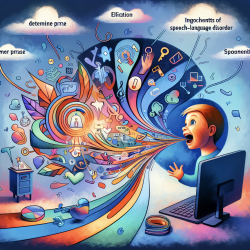Introduction
The landscape of therapeutic interventions is continually evolving, with new methodologies being explored to enhance outcomes for patients. One such promising approach is the integration of repetitive transcranial magnetic stimulation (rTMS) with behavioral therapy. This blog delves into the findings of the research paper "A Framework for Combining rTMS with Behavioral Therapy" by Tsagaris, Labar, and Edwards (2016), and discusses how practitioners can leverage these insights to improve therapeutic outcomes.
Understanding rTMS and Its Potential
Repetitive transcranial magnetic stimulation (rTMS) is a non-invasive brain stimulation technique that has shown potential in various therapeutic domains, including depression and neurological rehabilitation. Initially, rTMS was applied without integration into other therapeutic practices, limiting its effectiveness. However, recent research indicates that combining rTMS with behavioral therapy could amplify its benefits, enhancing brain reorganization and functional recovery.
The Framework for Combining rTMS with Behavioral Therapy
The research by Tsagaris et al. (2016) provides a comprehensive framework for integrating rTMS with behavioral interventions. Key components of this framework include:
- Timing and Sequencing: The timing of rTMS relative to behavioral therapy is crucial. The study suggests three temporal relationships: concurrent (simultaneous application), sequential (one follows the other), and interleaved (alternating intervals).
- Targeting and Customization: Customizing rTMS protocols based on individual patient needs and conditions can optimize outcomes. This involves adjusting parameters such as frequency, intensity, and coil positioning.
- Comprehensive Reporting: Detailed reporting and standardization of both rTMS and therapy characteristics are vital for replicability and understanding.
Implications for Practitioners
Practitioners can enhance their therapeutic approaches by incorporating the findings from this research. Here are some actionable insights:
- Experiment with Timing: Explore different timing strategies for rTMS and behavioral therapy to identify what works best for individual patients. This may involve concurrent application or adjusting the sequence based on patient response.
- Customize Protocols: Tailor rTMS protocols to the specific needs of patients, considering factors like the type of behavioral therapy and patient condition.
- Encourage Further Research: Engage in or support further research to explore the combination of rTMS with other therapeutic areas beyond motor function, such as cognitive and speech therapies.
Conclusion
The integration of rTMS with behavioral therapy presents a promising avenue for enhancing therapeutic outcomes. By following the framework outlined by Tsagaris et al. (2016), practitioners can optimize their interventions, leading to improved patient recovery and satisfaction. As the field continues to evolve, ongoing research and adaptation will be key to unlocking the full potential of this combined approach.
To read the original research paper, please follow this link: A Framework for Combining rTMS with Behavioral Therapy.










